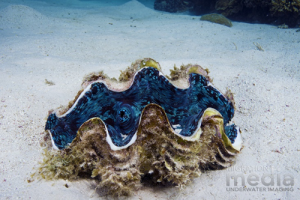Ryan Kluk
CIEE
Perth, Australia
Summer 2016
Blog 4: Clams! Clams! And more Clams!
While in Ningaloo Reef, we conducted research on clams, specifically the Tridacna maxima and the Tridacna Ningaloo. These two species are both part of the giant clam family and are very similar with the only difference being a genetic difference. These giant clams live all along the coast of Western Australia, not just Ningaloo Reef.

The giant clams obtain food through two separate processes: filter feeding and photosynthesis. To undergo photosynthesis, the clams have a mutualistic relationship with zooxanthellae, a microscopic algae that lives in the clams’ mantle giving the clam the colors and patterns on their “lips.” These colors can range from bright blue to docile brown. Each clam pattern is unique due to the zooxanthellae that inhabit the clam.
The biggest threat to clams are humans and habitat damage. In 2014, parts of the Ningaloo Reef were flooded. The increase in sediment made the clams ability to undergo photosynthesis impossible because there was not enough light piercing through the water. Without photosynthesis, the clams lost half of their food supply and eventually died. Humans are a threat to the clams because the clams are used for their meat and shells.
Much research is done on the clams because of their importance to coral reefs. The clams provide food, shelter, and act as reef builders and shapers once they have settled down permanently. The calcium carbonate that the clams release help frame the reefs that form around the clams. Clams are indicator species. Being indicator species allow scientists to observe the clams to determine the health of an ecosystem or habitat. Without the clams, many species would not be able to call the reef home because the clams provide sustainability to the reef.